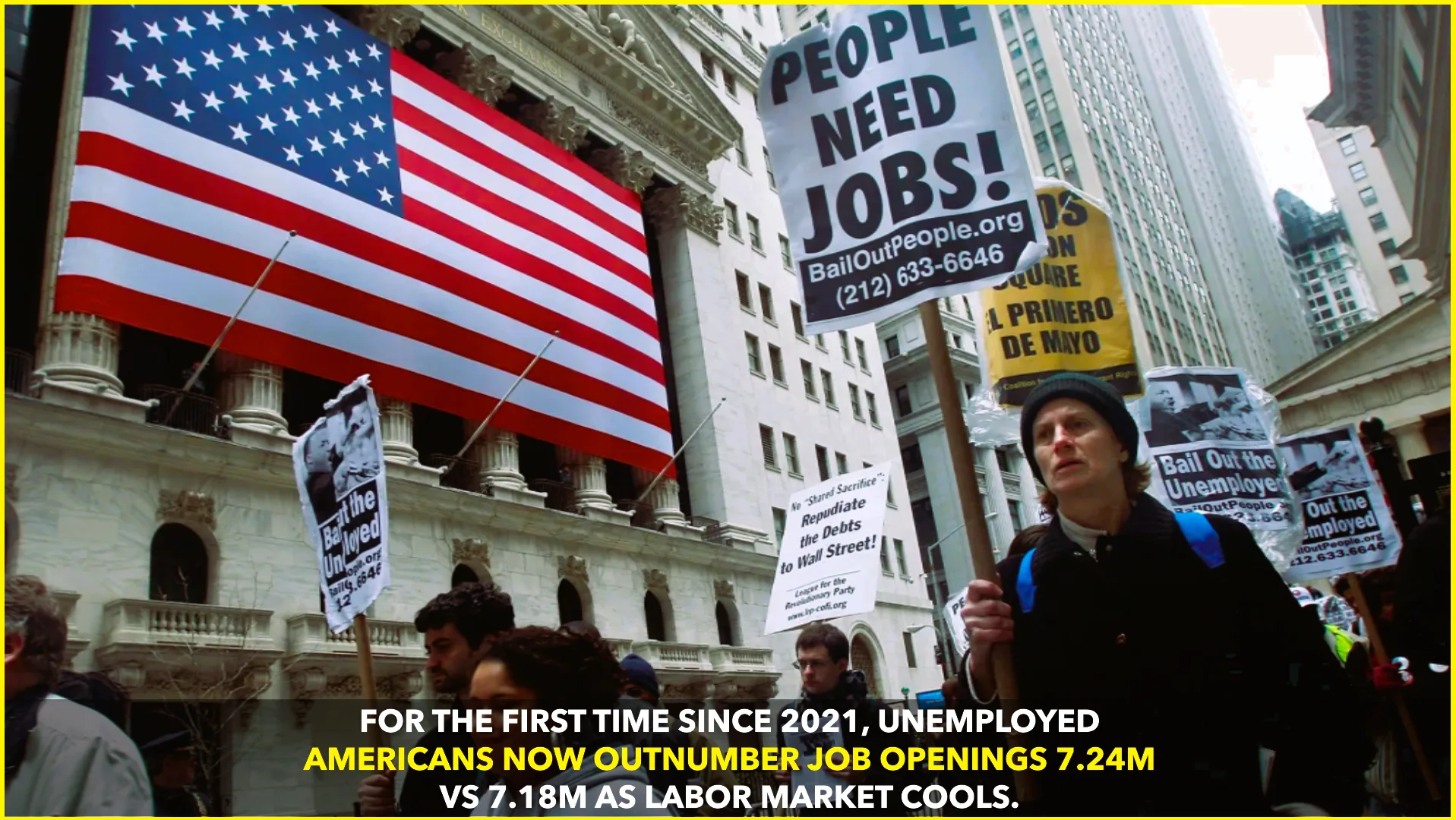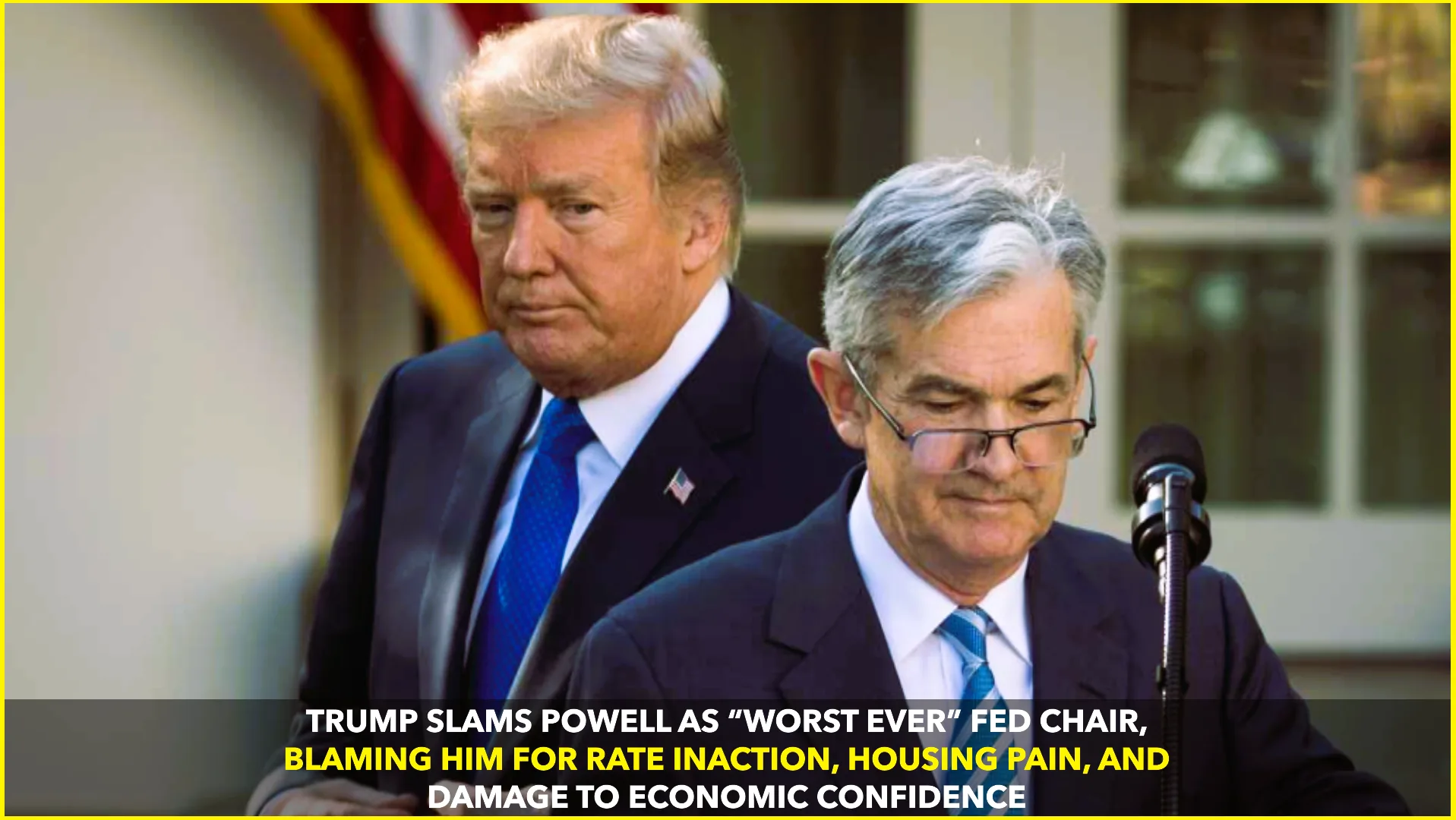For the first time since April 2021, the U.S. labor market has flipped—there are now more people seeking jobs than there are job vacancies. In July, job openings dipped to 7.18 million while unemployed Americans climbed to 7.24 million, pushing the vacancies-to-unemployed ratio below 1.0 for the first time in years Washington Examiner+1.
This imbalance marks a turning point. Employers have become cautious—partial hiring freezes, slower expansion, and weaker wage growth are signaling a shift. Meanwhile, job seekers face growing difficulty in landing roles, especially in entry-level and traditional sectors The Washington Post+1.
Factors Behind the Shift
Cooling Federal Reserve and Rising Rates
High interest rates have raised borrowing costs for businesses, prompting many to delay hiring. Economic uncertainty—fueled by volatile tariff policies and trade disputes—has added to the hesitancy. Together, these factors have drained the previous hiring momentum AP News+2Reuters+2.
Downward Job Revisions
The Bureau of Labor Statistics revised its figures, concluding that the economy added 911,000 fewer jobs from March 2024 to March 2025 than previously reported. This marked the largest recalibration in recent history and highlights the true weakness of the labor market AP News+2The Guardian+2.
Waning Worker Confidence
A survey by the New York Federal Reserve found job-finding sentiment slumped to its lowest since the series began in 2013, with confidence falling to just 44.9 % The Washington Post+1. Meanwhile, layoffs have ticked up, with more than 800,000 jobs cut so far in the first eight months of 2025—the highest cutting rate since the pandemic began The Washington Post.
Market Indicators and Economic Outlook
August saw a mere 22,000 new jobs added, far below expectations, and the unemployment rate edged up to about 4.3 %—the highest since 2021 Advisor Perspectives+1. At the same time, weekly unemployment claims surged to around 263,000—the highest level in nearly four years and a troubling indication of broader labor stress AP News+1.
Inflation remains elevated at approximately 2.9 % annually. This creates a dilemma: cutting interest rates could ease hiring pressure, but risks fueling inflation further The Washington Post+1. The Federal Reserve appears poised to prioritize employment stability over inflation containment, increasing the odds of a rate reduction in its next meeting AP News+1.
What This Means for Workers and Wealth
Traditional Jobs Holding Less Promise
In a market where demand is cooling and hiring is subdued, relying solely on wage income is becoming more uncertain. Many are finding that traditional roles no longer guarantee stability or growth.
Rise of Asset-Driven Wealth
In this new environment, wealth—and by extension security—is shifting toward those who own appreciating assets. Investments in real estate, equities, businesses, or even crypto are becoming more central. Companies and individuals who can pivot to own assets or passive income streams are positioning themselves to capitalize on long-term trends.
Smart Adaptation Is Key
Those who diversify income sources—through side-ventures, investments, or property—are better insulated against labor market downturns. Passive and portfolio income strategies offer resilience when traditional hiring stalls.
What’s Ahead
- Federal Reserve Policy: A rate cut is increasingly likely, but elevated inflation may delay decisions. Softening labor metrics strengthen the case for easing soon.
- Continued Hiring Caution: Companies are likely to remain conservative until policy and trade risks stabilize.
- Shifting Job Landscape: Entry-level openings and traditionally stable sectors may shrink, while asset-rich and tech-savvy individuals gain advantage.
Bottom Line
The U.S. job scene has entered unfamiliar territory: more job hunters than job openings. Economic headwinds—rising rates, policy uncertainty, and employer caution—are reshaping the path forward. In this new reality, traditional wage work feels riskier. Meanwhile, asset ownership and diverse income sources emerge as safer bets. Those adaptable enough to pivot—toward investments, entrepreneurship, or multiple income layers—are the ones most likely to come out ahead.










